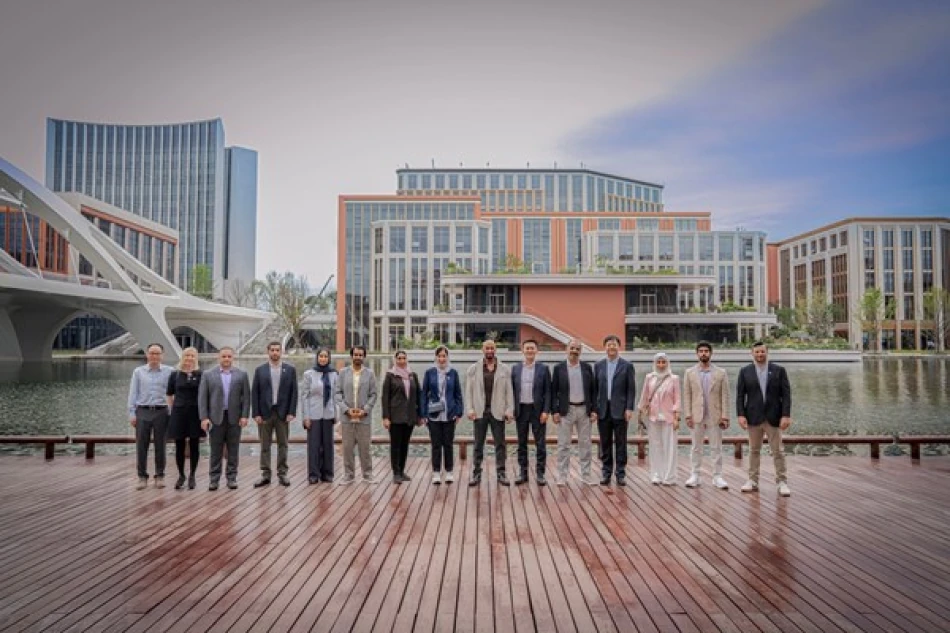
Saudi Official Explores Huawei's R&D Hub in Shanghai, Strengthening Tech Ties
UAE Deepens Tech Partnership with Huawei Ahead of Major Media Summit
The UAE is positioning itself as a global hub for AI-powered media innovation through strategic partnerships with Chinese tech giant Huawei, as preparations intensify for the Bridge 2025 summit in Abu Dhabi. The collaboration signals the Emirates' ambitious push to revolutionize Arabic-language digital content using cutting-edge artificial intelligence and cloud technologies.
High-Level Diplomatic Push for Media Innovation
Abdullah bin Mohammed bin Butti Al Hamed, Chairman of the UAE Media Council and head of the National Media Office, recently visited Huawei's research and development center in Shanghai as part of preparatory efforts for Bridge 2025. The summit, scheduled for December 8-10, 2025, aims to become the world's largest platform connecting media leaders, content creators, and policymakers.
The visit underscores the UAE's systematic approach to building technological sovereignty in media production, moving beyond traditional oil-based economic models toward knowledge-intensive industries. Al Hamed was accompanied by Dr. Jamal Mohammed Al Kaabi, Director General of the National Media Office, highlighting the government-level priority placed on this initiative.
Strategic Focus on Arabic Content
During meetings with Huawei's leadership team, including Liu Yang Ming, head of global cloud media services, discussions centered on AI solutions specifically designed for Arabic-language broadcasting and digital platforms. This represents a significant shift from Western-dominated content technologies that often struggle with Arabic script and cultural nuances.
Market Implications for Regional Tech Adoption
The partnership reflects broader geopolitical trends as Middle Eastern nations diversify their technology partnerships beyond traditional Western suppliers. Unlike restrictive approaches seen in the US and parts of Europe regarding Chinese technology, the UAE continues embracing Huawei's infrastructure for strategic sectors.
For investors, this signals potential opportunities in Arabic-language AI applications and cloud-based media services. The collaboration could accelerate adoption of 5G broadcasting technologies across the Gulf region, where Huawei maintains strong market presence despite global tensions.
Competitive Positioning Against Global Hubs
The Bridge 2025 summit positions Abu Dhabi to compete directly with established media technology conferences in Singapore, London, and Las Vegas. However, the UAE's approach differs by emphasizing responsible cooperation and sustainable development rather than purely commercial objectives.
Technology Integration Across Multiple Sectors
The partnership extends beyond traditional media into smart education platforms and interactive digital services. Huawei's Lianqiu Lake R&D Center showcased innovations that could transform how Arabic educational content is delivered across the region's growing young population.
This integration strategy mirrors successful models in Singapore and South Korea, where government-backed technology partnerships created lasting competitive advantages in digital industries. The UAE appears to be replicating this playbook with Chinese rather than American technology partners.
Long-term Strategic Vision
Al Hamed emphasized that Bridge 2025 serves as a strategic incubator for responsible cooperation and an open laboratory for developing new partnership models. This language suggests the UAE views media technology as a diplomatic tool for soft power projection across Arabic-speaking markets.
The collaboration positions the Emirates to potentially become the primary hub for AI-powered Arabic content creation, serving over 400 million Arabic speakers globally. Success could establish Abu Dhabi as the Silicon Valley equivalent for Middle Eastern media technology, attracting talent and investment from across the region.
For global media companies, the UAE-Huawei partnership represents both opportunity and competitive threat, as locally-developed Arabic AI solutions could displace international platforms currently serving regional markets.
 Layla Al Mansoori
Layla Al Mansoori







